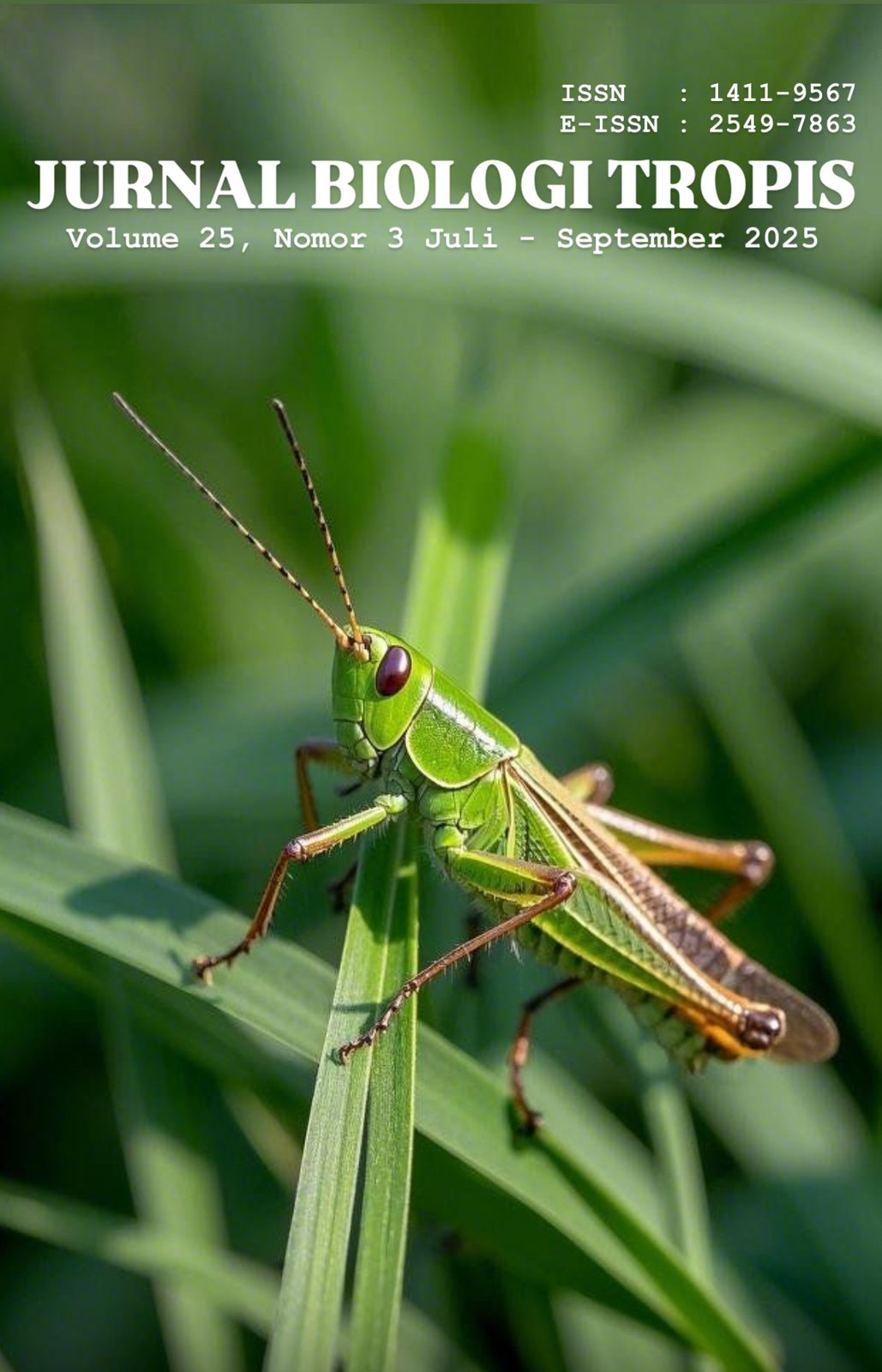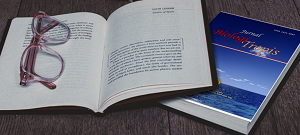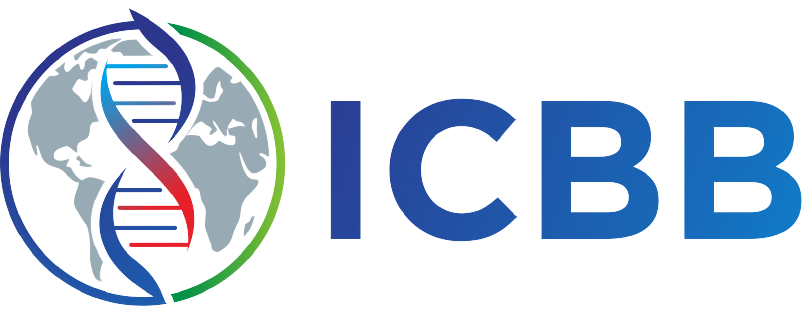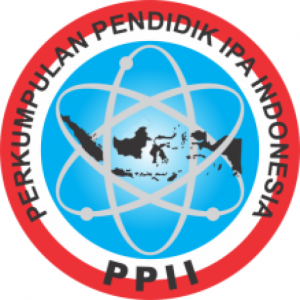Biomagnification of Mercury Through the Aquatic Food Chain in Lake Lebo Taliwang West Sumbawa
Authors
Abdul Rahman , Andi Maria Ulfa , Junaidi efendi , Eko SupriastutiDOI:
10.29303/jbt.v25i3.9452Published:
2025-07-09Issue:
Vol. 25 No. 3 (2025): Juli-SeptemberKeywords:
Accumulation, biomagnification, mercury, Lebo Lake.Articles
Downloads
How to Cite
Downloads
Metrics
Abstract
Lebo Taliwang Lake has been reported to be polluted by mercury compounds. This study aims to determine the occurrence of mercury biomagnification in the food chain in Lebo Lake Taliwang. Samples of water, tilapia, water strider and japan pond heron were taken at two sampling locations: inlet and outlet. Samples were tested for mercury content with a mercury analyzer. The results show that there is mercury accumulation in the Lebo Taliwang Lake ecosystem. The average of each sample was 1.95 in water, 99.5 in tilapia, 79.8 in water srider, and 948.09 and 143 in feathers and blood, respectively. Furthermore, the results of the biomagnification factor (BMF) value show the BMF>1. This means that there is biomagnification of mercury in Lebo Taliwang Lake. The biomagnification value of japan pond heron in feather and blood with nile tilapia is 9.52 and 1.43. Meanwhile, with water stider, the values are 11.87 and 1.81. This study recommends enhanced monitoring and regulation of illegal gold mining (PETI) activities, as well as environmental rehabilitation efforts around Lake Lebo
References
Aazami, J., Esmaili-Sari, A., Bahramifar, N., & Savabieasfahani, M. (2012). Total and organic mercury in liver, kidney and muscle of waterbirds from wetlands of the Caspian Sea, Iran. Bulletin of Environmental Contamination and Toxicology, 89(1), 96–101. https://doi.org/10.1007/s00128-012 0653-4
Amanda, D. D. (2016). Akumulasi merkuri di Danau Lebo, Kabupaten Sumbawa Barat, Nusa Tenggara Barat [Skripsi, Universitas Gadjah Mada].
Barkay, T., & Poulain, A. J. (2007). Mercury (micro)biogeochemistry in polar environments. FEMS Microbiology Ecology, 59, 232–241. https://doi.org/10.1111/j.1574 6941.2006.00246.x
Charvát, P., Klimeš, L., Pospíšil, J., Klemeš, J. J., & Varbanov, P. S. (2020). An overview of mercury emissions in the energy industry – A step to mercury footprint assessment. Journal of Cleaner Production, 267, 122087. https://doi.org/10.1016/j.jclepro.2020.122087
Dauwe, T., Bervoets, L., Blust, R., Pinxten, R., & Eens, M. (2000). Can excrements and feathers of nestling songbirds be used as a biomonitor for heavy metal pollution? Archives of Environmental Contamination and Toxicology, 39, 541–546. https://doi.org/10.1007/s002440010138
Fitzgerald, W. F., Lamborg, C. H., & Hammerschmidt, C. R. (2007). Marine biogeochemical cycling of mercury. Chemical Reviews, 107(2), 641–662. https://doi.org/10.1021/cr050353m
Gobas, F. A. P. C., & Morrison, H. A. (2000). Bioconcentration and bioaccumulation in the aquatic environment. In R. Boethling & D. Mackay (Eds.), Handbook of property estimation methods for chemicals: Environmental and health sciences (pp. 189–231). CRC Press.
Goede, A. A., & De Bruin, M. (n.d.). The use of bird feather parts as a monitor for metal pollution. Environmental Pollution, 8, 281–298. https://doi.org/10.1016/0143-148X(84)90028-4
Gworek, B., Dmuchowski, W., & Baczewska-Dąbrowska, A. H. (2020). Mercury in the terrestrial environment: A review. Environmental Sciences Europe, 32, 128. https://doi.org/10.1186/s12302-020-00363-1
Houserová, P., Kubán, V., Komar, S., & Sitko, J. (2007). Total mercury and mercury species in birds and fish in an aquatic ecosystem in the Czech Republic. Environmental Pollution, 145, 185–194. https://doi.org/10.1016/j.envpol.2006.03.053
Jardine, T. D., Kidd, K. A., Culp, J. M., & Arp, P. A. (2009). Factors affecting water strider (Hemiptera: Gerridae) mercury concentrations in lotic systems. Environmental Toxicology and Chemistry, 28, 1480–1492. https://doi.org/10.1897/08-411.1
Jardine, T. D., McGeer, J. C., O'Halloran, K., Arp, P. A., & Ridal, J. J. (2004). Water striders (family Gerridae): Mercury sentinels in small freshwater ecosystems. Environmental Pollution, 134, 165–171. https://doi.org/10.1016/j.envpol.2004.07.004
King, R. H., Dunshea, F. R., Morrish, L., Eason, P. J., van Barneveld, R. J., Mullan, B. P., & Campbell, R. G. (2000). The energy value of Lupinus angustifolius and Lupinus albus for growing pigs. Animal Feed Science and Technology, 83(1), 17–30. https://doi.org/10.1016/S0377-8401(99)00111-7
Lonescu, P., Vasile, G. G., Enache, A. C., & Baroiu, A. (2019). Bioaccumulation of potentially toxic elements in fish species from aquatic environments located in crowded areas of Southern Romania. Technium, 1, 53–58. https://doi.org/10.47577/technium.v1i.19
Newman, M. C. (2008). Ecotoxicology (2nd ed.). CRC Press.
Poissant, L., Dommergue, A., & Ferrari, C. (2002). Mercury as a global pollutant. Journal de Physique IV, 12, 279–287. https://doi.org/10.1051/jp4:20020457
Saeki, K., Okabe, Y., Kim, E.-Y., Tanabe, S., Fukuda,M., & Tatsukawa, R. (2000). Mercury and cadmium in common cormorants (Phalacrocoraxcarbo). Environmental Pollution, 108, 249–255. https://doi.org/10.1016/S0269-7491(99)00188-7
Saber,T(2023). Understanding biomagnification: The accumulative impact on food chains and ecosystems. Journal of Aquatic Pollution and Toxicology,7(2),14. https://doi.org/10.21767/2581-804X-7.2.14
Saidon, N. B., Szabó, R., Budai, P., & Lehel, J. (2024). Trophic transfer and biomagnification potential of environmental contaminants (heavy metals) in aquatic ecosystems. Environmental Pollution, 340(Part 1), 122815. https://doi.org/10.1016/j.envpol.2023.122815
Stewart, F. M., Phillips, R. A., Catry, P., & Furness, R. W. (1997). Influence of species, age and diet on mercury concentrations in Shetland seabirds. Marine Ecology Progress Series, 151, 237–244.
Suhendrayatna, S., Arahman, N., Sipahutar, L. W., Rinidar, R., & Elvitriana, E. (2019). Toxicity and organ distribution of mercury in freshwater fish (Oreochromis niloticus) after exposure to water contaminated with mercury (HgII). Toxics, 7(4), 58. https://doi.org/10.3390/toxics7040058
Suseno, H. (2011). Bioakumulasi merkuri dan metil merkuri oleh Oreochromis mossambicus menggunakan aplikasi peruntut radioaktif: Pengaruh konsentrasi, salinitas, partikulat, ukuran ikan dan kontribusi jalur pakan [Disertasi, Universitas Indonesia].
Szkudlińska, M. M., Szefer, P., Kalisinska, E., & Namieśnik, J. (2011). Biomagnification of mercury in trophic relation of great cormorant (Phalacrocorax carbo) and fish in the Vistula Lagoon, Poland. Environmental Monitoring and Assessment, 176, 439–449. https://doi.org/10.1007/s10661-010-1598-2
Zamani-Ahmadmahmoodi, R., Esmaili-Sari, A., Savabieasfahani, M., & Bahramifar, N. (2009). Cattle egret (Bubulcus ibis) and little egret (Egretta garzetta) as monitors of mercury contamination in Shadegan Wetlands of south-western Iran. Environmental Monitoring and Assessment, 166, 371–377. https://doi.org/10.1007/s10661-009-1004-z
Zhang, Z., Wang, Q., Zhao, D., Zheng, N., & Li, X. (2010). Mercury distribution and bioaccumulation up the soil–plant grasshopper–spider food chain in Huludao City, China. Journal of Environmental Sciences, 22, 1179–1183. https://doi.org/10.1016/S1001-0742(09)60230-3
License
Copyright (c) 2025 Abdul Rahman, Andi Maria Ulfa, Junaidi efendi, Eko Supriastuti

This work is licensed under a Creative Commons Attribution 4.0 International License.

Jurnal Biologi Tropis is licensed under a Creative Commons Attribution 4.0 International License.
The copyright of the received article shall be assigned to the author as the owner of the paper. The intended copyright includes the right to publish the article in various forms (including reprints). The journal maintains the publishing rights to the published articles.
Authors are permitted to disseminate published articles by sharing the link/DOI of the article at the journal. Authors are allowed to use their articles for any legal purposes deemed necessary without written permission from the journal with an acknowledgment of initial publication to this journal.


























